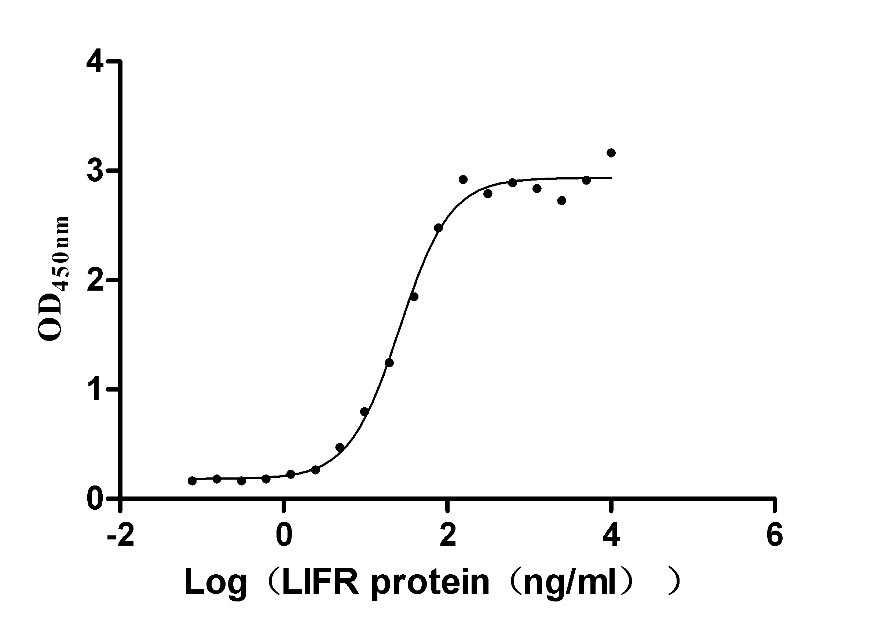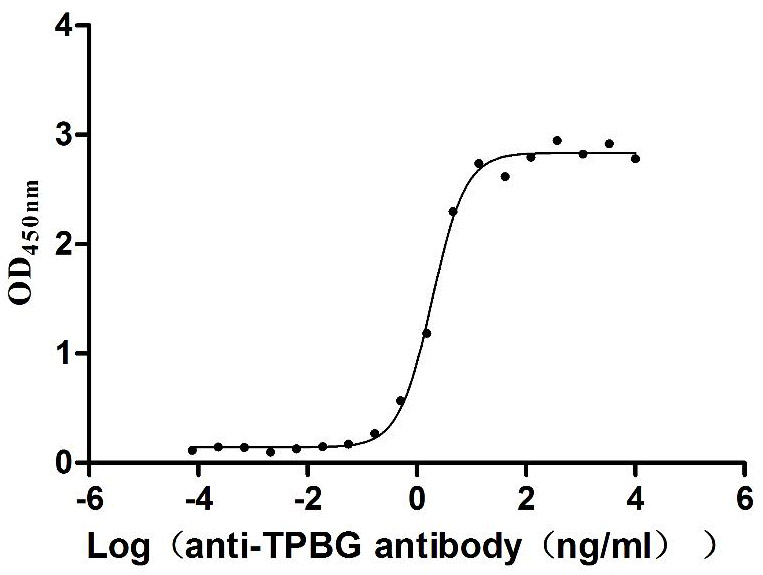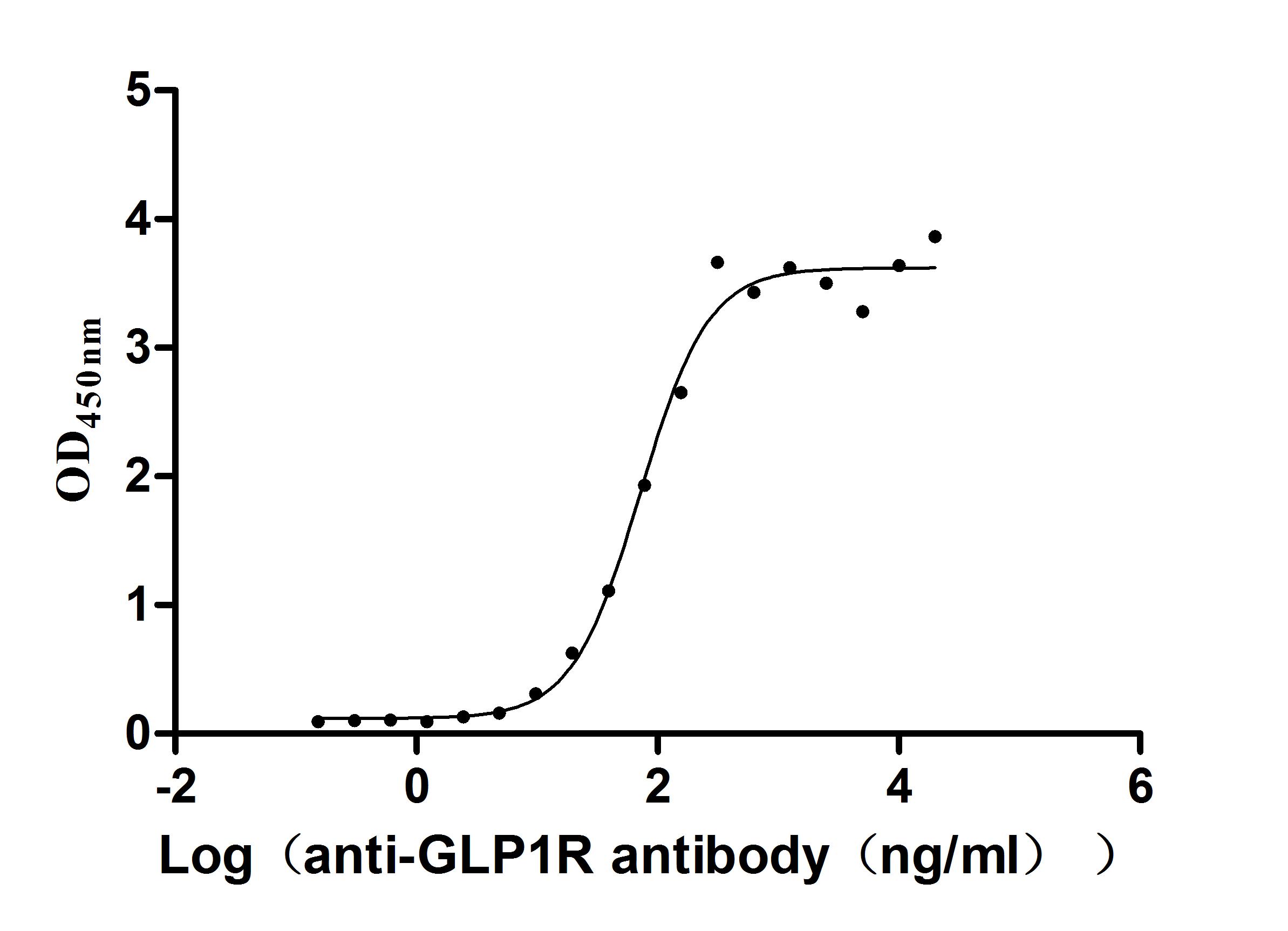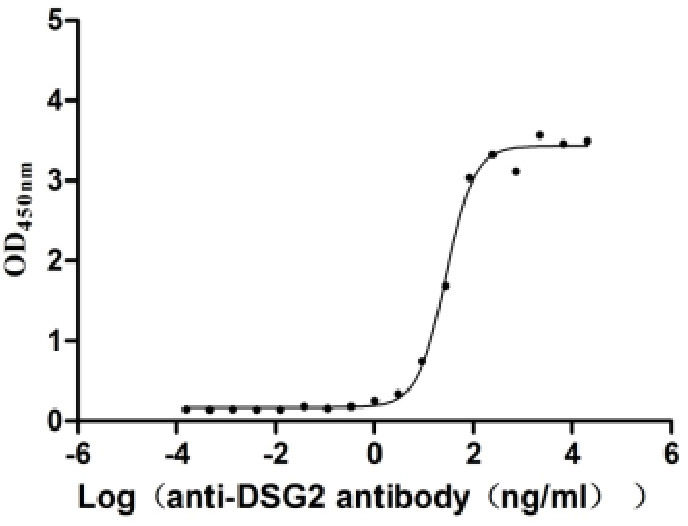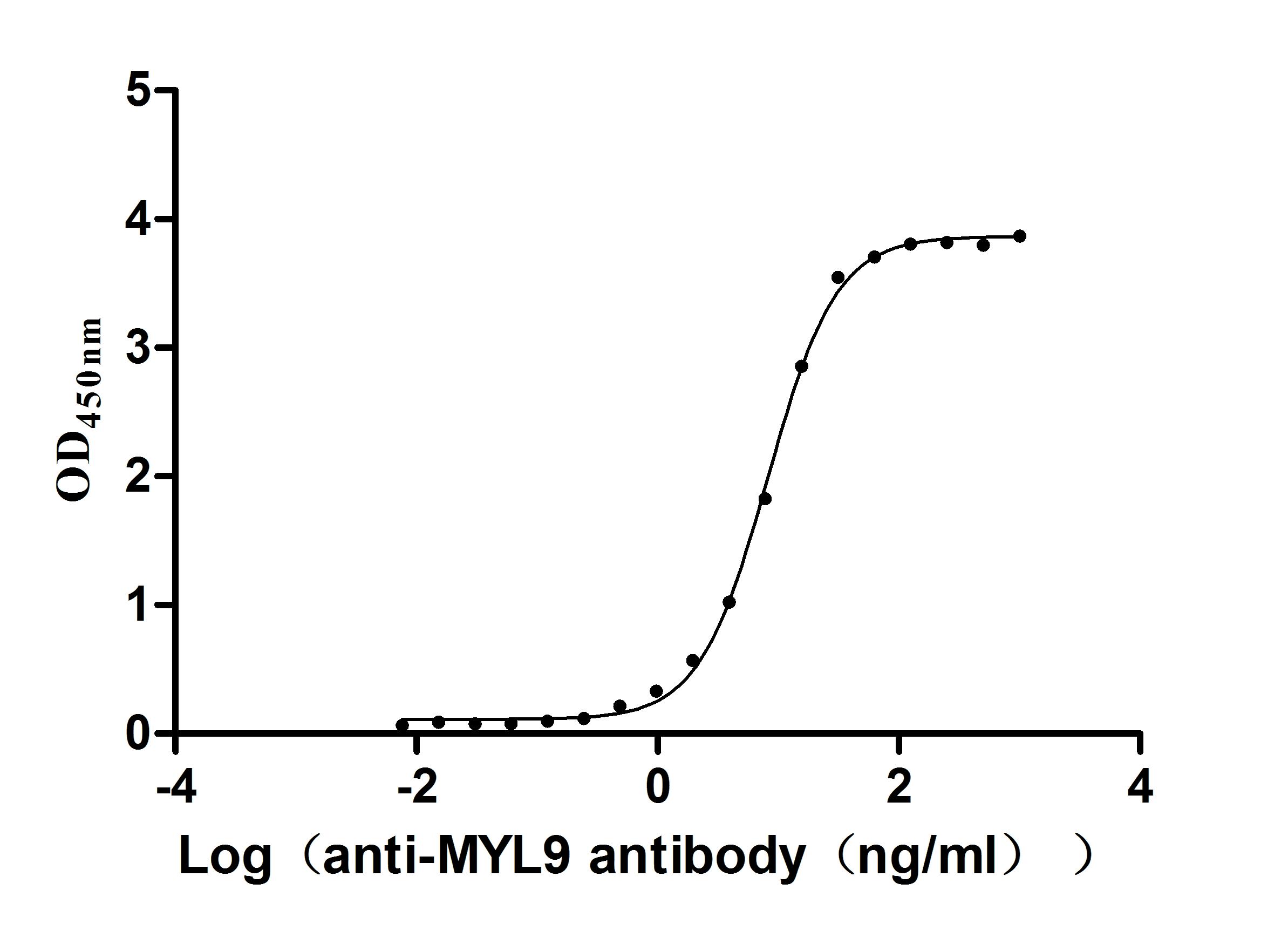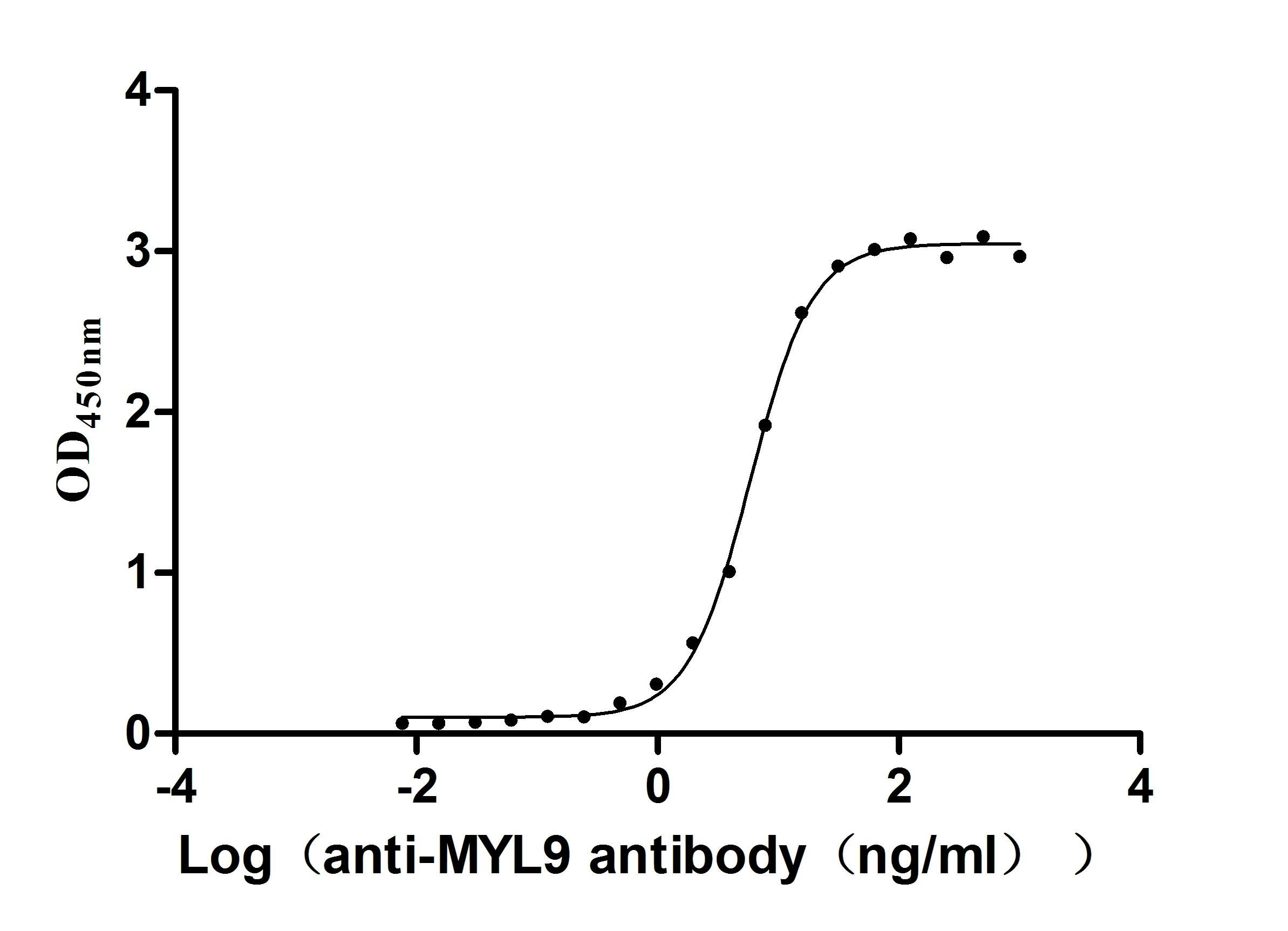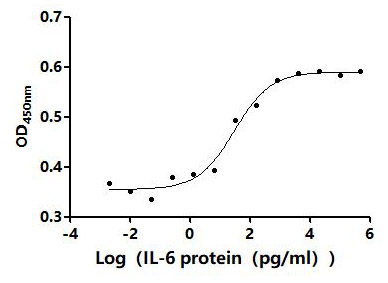Recombinant Human Crumbs homolog 2 (CRB2), partial
-
中文名稱:Recombinant Human Crumbs homolog 2(CRB2) ,partial
-
貨號(hào):CSB-YP692212HU
-
規(guī)格:
-
來源:Yeast
-
其他:
-
中文名稱:Recombinant Human Crumbs homolog 2(CRB2) ,partial
-
貨號(hào):CSB-EP692212HU
-
規(guī)格:
-
來源:E.coli
-
其他:
-
中文名稱:Recombinant Human Crumbs homolog 2(CRB2) ,partial
-
貨號(hào):CSB-EP692212HU-B
-
規(guī)格:
-
來源:E.coli
-
共軛:Avi-tag Biotinylated
E. coli biotin ligase (BirA) is highly specific in covalently attaching biotin to the 15 amino acid AviTag peptide. This recombinant protein was biotinylated in vivo by AviTag-BirA technology, which method is BriA catalyzes amide linkage between the biotin and the specific lysine of the AviTag.
-
其他:
-
中文名稱:Recombinant Human Crumbs homolog 2(CRB2) ,partial
-
貨號(hào):CSB-BP692212HU
-
規(guī)格:
-
來源:Baculovirus
-
其他:
-
中文名稱:Recombinant Human Crumbs homolog 2(CRB2) ,partial
-
貨號(hào):CSB-MP692212HU
-
規(guī)格:
-
來源:Mammalian cell
-
其他:
產(chǎn)品詳情
-
純度:>85% (SDS-PAGE)
-
基因名:
-
Uniprot No.:
-
別名:Crb2; CRUM2_HUMAN; Crumbs homolog 2 (Drosophila); Crumbs homolog 2; Crumbs-like protein 2; RP11-230L22.2
-
種屬:Homo sapiens (Human)
-
蛋白長(zhǎng)度:Partial
-
蛋白標(biāo)簽:Tag?type?will?be?determined?during?the?manufacturing?process.
The tag type will be determined during production process. If you have specified tag type, please tell us and we will develop the specified tag preferentially. -
產(chǎn)品提供形式:Lyophilized powder
Note: We will preferentially ship the format that we have in stock, however, if you have any special requirement for the format, please remark your requirement when placing the order, we will prepare according to your demand. -
復(fù)溶:We recommend that this vial be briefly centrifuged prior to opening to bring the contents to the bottom. Please reconstitute protein in deionized sterile water to a concentration of 0.1-1.0 mg/mL.We recommend to add 5-50% of glycerol (final concentration) and aliquot for long-term storage at -20℃/-80℃. Our default final concentration of glycerol is 50%. Customers could use it as reference.
-
儲(chǔ)存條件:Store at -20°C/-80°C upon receipt, aliquoting is necessary for mutiple use. Avoid repeated freeze-thaw cycles.
-
保質(zhì)期:The shelf life is related to many factors, storage state, buffer ingredients, storage temperature and the stability of the protein itself.
Generally, the shelf life of liquid form is 6 months at -20°C/-80°C. The shelf life of lyophilized form is 12 months at -20°C/-80°C. -
貨期:Delivery time may differ from different purchasing way or location, please kindly consult your local distributors for specific delivery time.Note: All of our proteins are default shipped with normal blue ice packs, if you request to ship with dry ice, please communicate with us in advance and extra fees will be charged.
-
注意事項(xiàng):Repeated freezing and thawing is not recommended. Store working aliquots at 4°C for up to one week.
-
Datasheet :Please contact us to get it.
相關(guān)產(chǎn)品
靶點(diǎn)詳情
-
功能:Apical polarity protein that plays a central role during the epithelial-to-mesenchymal transition (EMT) at gastrulation, when newly specified mesodermal cells move inside the embryo. Acts by promoting cell ingression, the process by which cells leave the epithelial epiblast and move inside the embryo to form a new tissue layer. The anisotropic distribution of CRB2 and MYH10/myosin-IIB at cell edges define which cells will ingress: cells with high apical CRB2 are probably extruded from the epiblast by neighboring cells with high levels of apical MYH10/myosin-IIB. Plays a role in the maintenance of retinal neuroepithelium organization, structural integrity, adhesion, photoreceptor polarity and retinal photoreceptor layer thickness. May play a role in determining the length of cone photoreceptor outer segments and proliferation of late-born progenitor cells. Also required for maintenance of the apical polarity complex during development of the cortex. Inhibits gamma-secretase-dependent cleavage of APP and secretion of amyloid-beta peptide 40 and amyloid-beta peptide 42, and thereby inhibits gamma-secretase-dependent Notch transcription.
-
基因功能參考文獻(xiàn):
- Case Report: steroid-resistant nephrotic syndrome caused by a novel Crumbs homolog 2 mutation. PMID: 29473663
- These findings demonstrate that Crb2 abnormalities caused by these mutations are the mechanism of steroid-resistant nephrotic syndrome PMID: 27942854
- Clinically, CRB2 should be assessed when ciliopathy is suspected, especially in Ashkenazi Jews, where we found that p.N800K carrier frequency is 1 of 64. Patients harboring CRB2 mutations should be tested for the complete range of ciliopathy manifestations. PMID: 26925547
- Additional sequence variants in genes involved in kidney development were found in patients with CRB2-related syndrome, suggesting that these variants may modify the phenotype. PMID: 27004616
- We demonstrate that CRB2 mutations result in loss of function and therefore constitute causative mutations leading to Nephrotic syndrome in humans. PMID: 25557779
- The three families with six affected individuals present compelling evidence for the role of CRB2 in human disease, with a phenotype comprising severe, congenital neurological and renal involvement. PMID: 25557780
- Study showed that CRB1 and CRB2 in human retinas have an opposite pattern of expression in Muller glia and photoreceptor cells compared with mouse retinas, and that Crb2 influences the severity of the murine Crb1-linked retinal dystrophies. PMID: 24565864
- Observational study of gene-disease association. (HuGE Navigator) PMID: 20583170
- results suggest that CRB2 functions as an inhibitory binding protein that is involved in the formation of a mature but inactive pool of the gamma-secretase complex PMID: 20299451
- Crumbs homolog 2 gene maps to human chromosome 9q33.3 PMID: 14767562
- This study shows that CRB2 sequence variants are not a common cause of autosomal recessive RP and LCA. PMID: 15851977
- Using X-ray crystallography and NMR spectroscopy, we show that, despite low amino acid sequence conservation, both 53BP1 and Crb2 contain tandem tudor domains that interact with histone H4 specifically dimethylated at Lys20 (H4-K20me2). PMID: 17190600
- overexpression of human CRB1 and related isoforms, CRB2 and CRB3, had no effect on the levels of presenilin complex components, on NCT maturation or on PS endoproteolysis PMID: 17988153
- The CRB2 gene encodes a transmembrane protein (1285 aa) and a secreted protein (1176 aa). The transmembrane isoform consists of 14 extracellular EGF-like domains, 3 extracellular laminin G-like domains, and a Crb cytoplasmic tail domain. PMID: 14767562
顯示更多
收起更多
-
相關(guān)疾病:Focal segmental glomerulosclerosis 9 (FSGS9); Ventriculomegaly with cystic kidney disease (VMCKD)
-
亞細(xì)胞定位:[Isoform 1]: Apical cell membrane; Single-pass type I membrane protein. Cytoplasm. Cell junction.; [Isoform 2]: Secreted.
-
蛋白家族:Crumbs protein family
-
組織特異性:Expressed in glomeruli, podocytes of the glomerular capillary loops, and parietal glomerular epithelial cells in the kidney (at protein level). Expressed in retina, fetal eye and brain. Also expressed in kidney, RPE/choroid, and at low levels in lung, pla
-
數(shù)據(jù)庫(kù)鏈接:
Most popular with customers
-
Recombinant Human Leukemia inhibitory factor (LIF) (Active)
Express system: Mammalian cell
Species: Homo sapiens (Human)
-
Recombinant Macaca fascicularis Trophoblast glycoprotein (TPBG), partial (Active)
Express system: Mammalian cell
Species: Macaca fascicularis (Crab-eating macaque) (Cynomolgus monkey)
-
Recombinant Human Glucagon-like peptide 1 receptor (GLP1R), partial (Active)
Express system: Mammalian cell
Species: Homo sapiens (Human)
-
Recombinant Human Desmoglein-2 (DSG2), partial (Active)
Express system: Mammalian cell
Species: Homo sapiens (Human)
-
Recombinant Human Carcinoembryonic antigen-related cell adhesion molecule 8(CEACAM8) (Active)
Express system: Mammalian cell
Species: Homo sapiens (Human)
-
Recombinant Human Myosin regulatory light chain 12B (MYL12B) (Active)
Express system: E.coli
Species: Homo sapiens (Human)
-
Recombinant Human Myosin regulatory light chain 12A (MYL12A) (Active)
Express system: E.coli
Species: Homo sapiens (Human)
-


